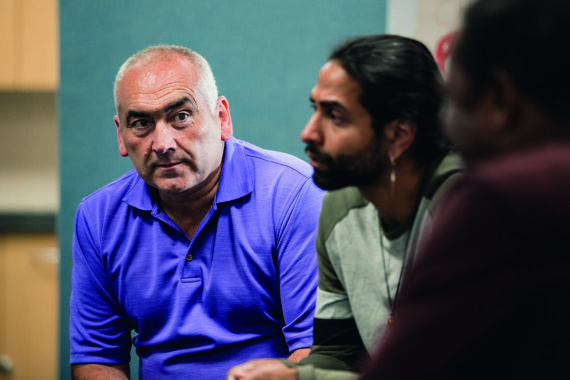Key points
- Group consultations typically provide 8-10 patients with similar conditions an opportunity to talk in a supportive environment
- Typically, sessions are around two hours long, can be online or face to face and ideally happen weekly
- The usual model involves splitting the session into two halves: the first half being a group discussion led by a facilitator, then one-to-one input with a clinician, with help from the group
- The clinician makes notes in each patient’s medical record, documenting the group’s discussion and the individual’s concerns, results
and goals - There is evidence suggesting this model improves patient outcomes, especially for those with long-term conditions such as diabetes
- Potential practice benefits include improved clinician satisfaction, and potential cost and time savings
Dr Ellen Fallows is a GP in Oxford. She is vice-president of the British Society of Lifestyle Medicine and RCGP clinical adviser on obesity
What are group consultations?
Group consultations, sometimes known as group clinics or shared medical appointments, are common in the US and Australia and are now being used in UK primary and secondary care, either in person or online.
A typical group consultation is clinically focused but also offers a chance for eight to 1o patients with similar conditions to talk in a supportive environment (see box, right). The sessions tend to be around two hours long, and should be recorded in the health record as a group consultation. They are organised by a facilitator, who does not need to be medically qualified and starts off a session with group discussions between the patients.
The second half involves a clinician joining and having one-to-one discussions with individual patients, with the group listening in.
The clinician needs to have familiarised themselves with the patient’s health records, but should share no additional confidential information other than what the participant has already shared. During this part, if the clinician feels they have enough information, they may arrange prescriptions as well as follow-up and referral appointments after the group consultation.
Evidence suggests that this model improves patient outcomes, especially for those with long-term conditions including type 2 diabetes. There is also evidence for improved clinician satisfaction, as well as potential cost and time savings. Group consultations allow practices to offer appointments to a number of patients at a time, thereby reducing waiting list pressures, and they can help fulfil QOF requirements.
Here are tips for maximising their potential.
1: Train a good facilitator
Facilitators organise and deliver group consultations. Although they do not need to have a clinical background, they do need good communication skills. They benefit from having strong administration and IT skills so they can support clinicians with set-up, including the use of the electronic medical record, email, bulk-texting and video meetings. They also need training in professionalism, confidentiality and consent. With the right support and training, all primary care staff could become facilitators, whether they are receptionists, health coaches, healthcare assistants, or social prescribing link workers.
Click here to read the full article and download your certificate logging 1.5 CPD hour towards revalidation
Not a Pulse365 member? Click here to join and gain access to over 400 CPD modules
Pulse October survey
Take our July 2025 survey to potentially win £1.000 worth of tokens













